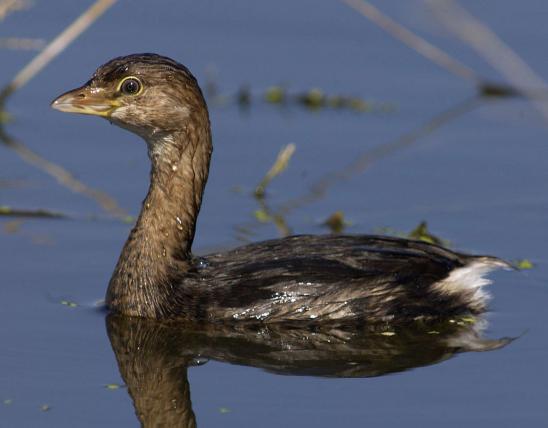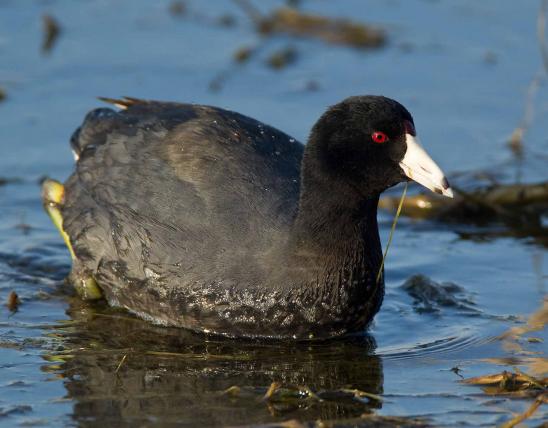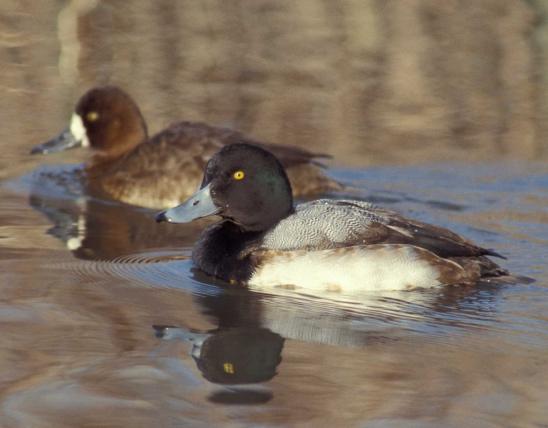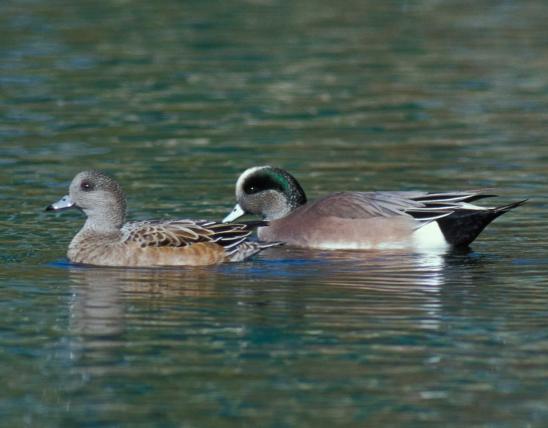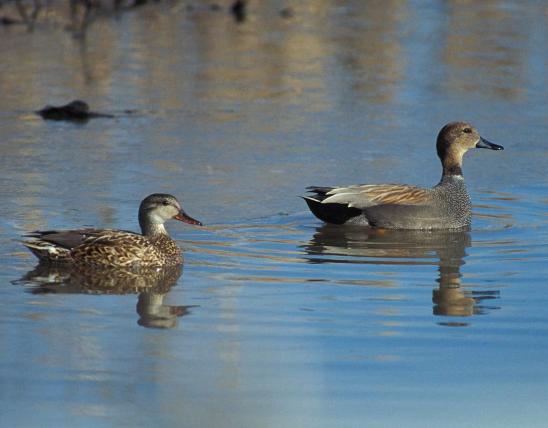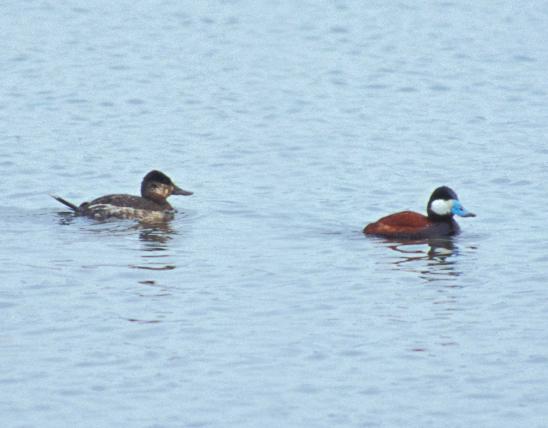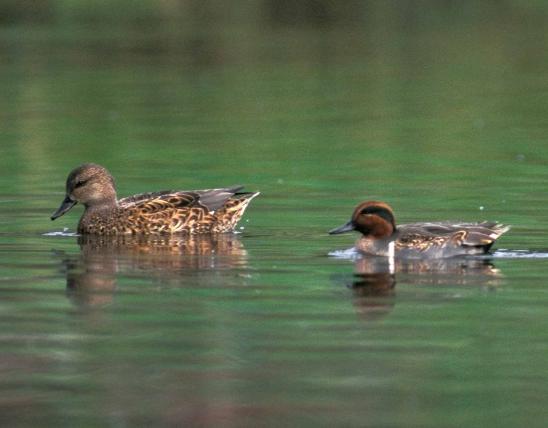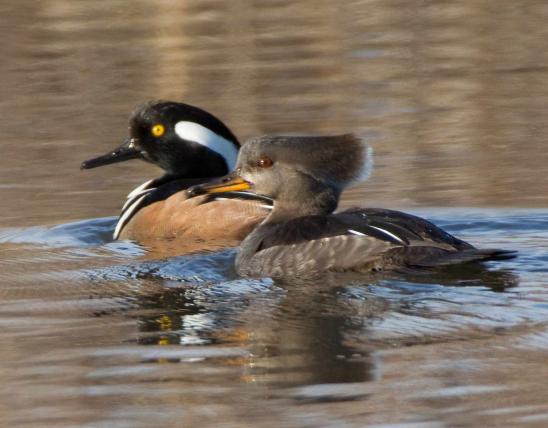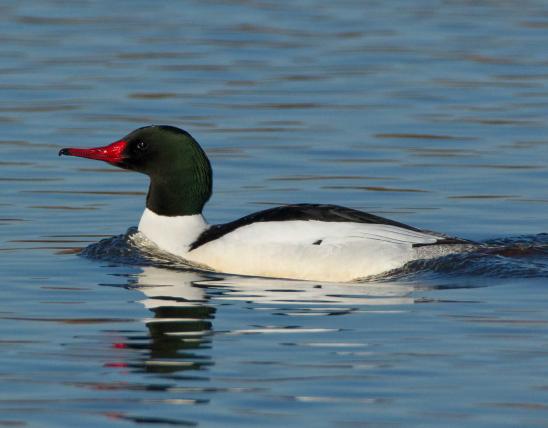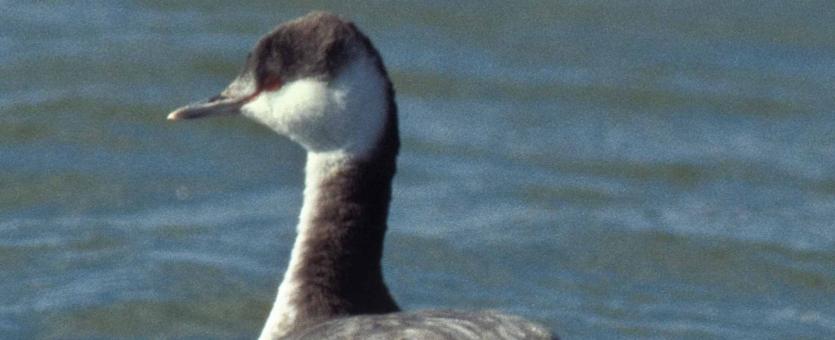
The horned grebe is a small, dark, ducklike bird with a rust-colored neck, black head, and dark, straight bill with a white tip in breeding plumage. Golden feathers form a crest that begins as an eye line and extends backward. In winter, this species has a very white neck and cheeks, appearing lighter than the eared grebe. Grebes have unique feet, with flaplike lobes along the toes instead of being webbed like those of ducks.
Similar species:
- Eared grebes in winter plumage lack the bold white cheeks of horned grebes. In breeding plumage, they have a dark, not rusty, neck. Also, the feathers of the tail and coverts appear to end abruptly, giving the body a less streamlined look than the horned grebe; also, the bill is thinner and looks slightly upturned. More frequently seen on marshes, ponds, and lakes. Unlikely to appear in our state in winter.
- Pied-billed grebes are more common in Missouri; they are brown and tan and have thick, conical, chickenlike bills with a dark ring around the middle in summer.
- Western grebes are rare migrants and very rare in winter. They are much larger than our other grebes, measuring 25 inches from tip of bill to tip of tail, and are black above, white below, with a long, pointy yellow bill.
- The red-necked grebe is quite rare in Missouri; it is larger, with a long, pointy yellow bill.
- Ducks have flattened bills and typically float higher in the water.
Length: 14 inches (tip of bill to tip of tail).
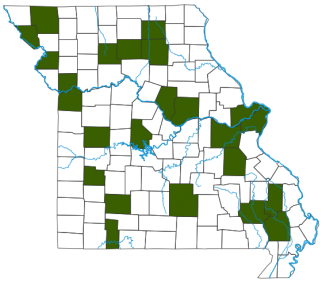
As a transient, statewide; as a winter resident, present in southern Missouri.
Habitat and Conservation
In Missouri, the horned grebe is an uncommon migrant usually seen as it stops to rest and forage on large reservoirs and deep rivers. It also winters on unfrozen lakes and is locally common in the southern part of the state. We are most likely to see them in winter plumage, though breeding plumage may be visible in spring. Like other grebes, it is an accomplished swimmer; to escape danger, it dives below the water surface. It is not usually seen in flight or on land.
Food
Dives below the surface of the water to capture crayfish, aquatic insects, small fish, and other small aquatic animals.
Status
Uncommon migrant statewide; uncommon winter resident in southern Missouri. Horned grebe populations have been declining significantly in recent decades, and researchers suspect numerous causes, mostly involving habitat loss and disturbance, oil spills, wetland draining, forest cutting near breeding territories, and more. Their breeding territory to the north is apparently shrinking, and climate change over the next century may reduce it much more.
Life Cycle
Present in Missouri from late September through mid-April. Populations peak during migration, in March and November. They breed in shallow freshwater ponds and wetlands in central and western Canada and Alaska. Nests are typically built on a floating raft of heaped-up vegetation, attached to emergent plant stalks. Clutches comprise 3–8 eggs, which are incubated 22–25 days. The chicks are precocial and can swim soon after hatching; they ride around on the back of a parent. There can be 1 or 2 broods a year. A horned grebe can live to be at least 5 years old.
Human Connections
In the past, people persecuted grebes thinking they were killers of fish, but it turns out that they eat mostly crayfish and other aquatic invertebrates. Grebes were also historically overhunted for their feathers, which had market value as hat decorations. Scientific studies rescued grebes in the first instance; political willpower saved them in the second.
Ecosystem Connections
There are two subspecies of horned grebe: the one we have in North America, Podiceps auritus cornutus, and the one that lives in Eurasia (P. a. auritus). The Eurasian subspecies has a darker, less grayish back. It breeds from Norway across Eurasia to western China, and it winters along coasts in northwestern Europe, along the Black and Caspian seas, and along the coasts of Korea, China, and Japan. The Eurasian subspecies, though widespread, is far less numerous than the population in North America, making population declines on our continent even more concerning.
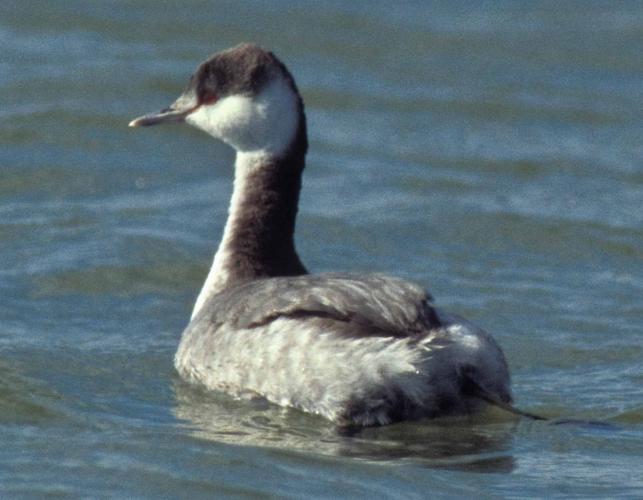
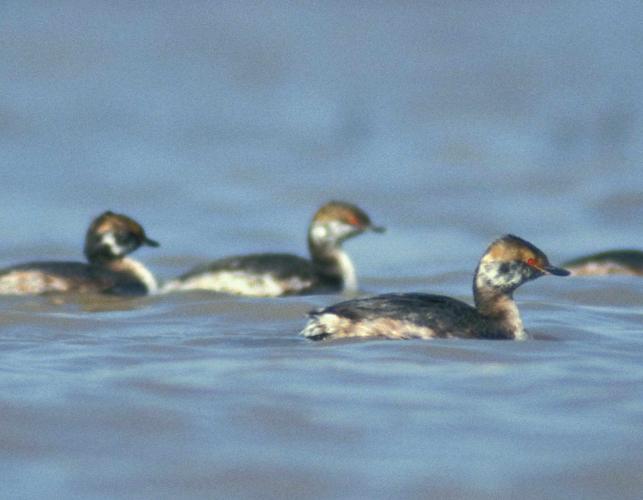
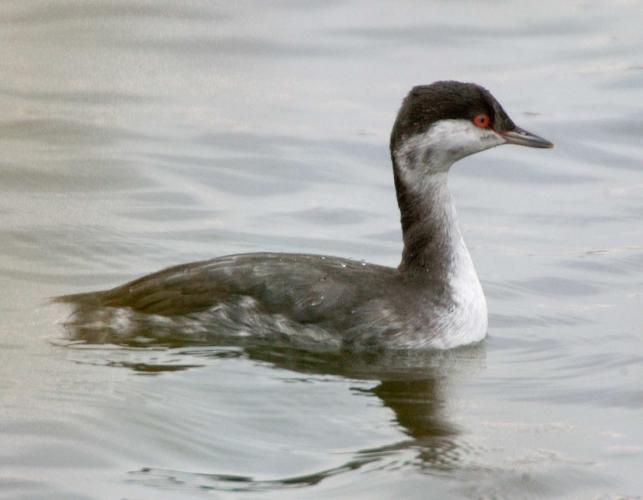
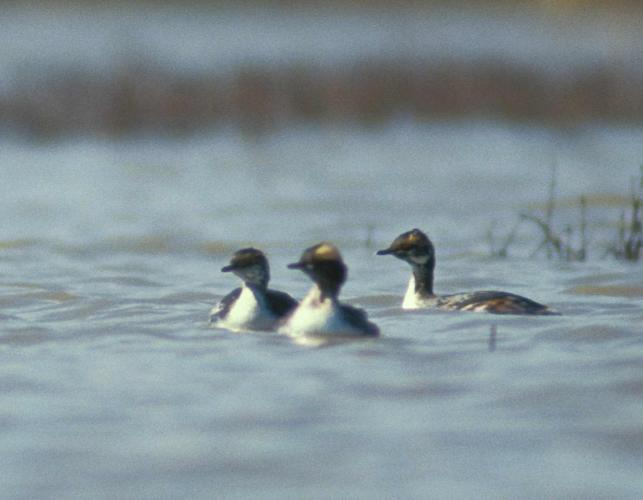
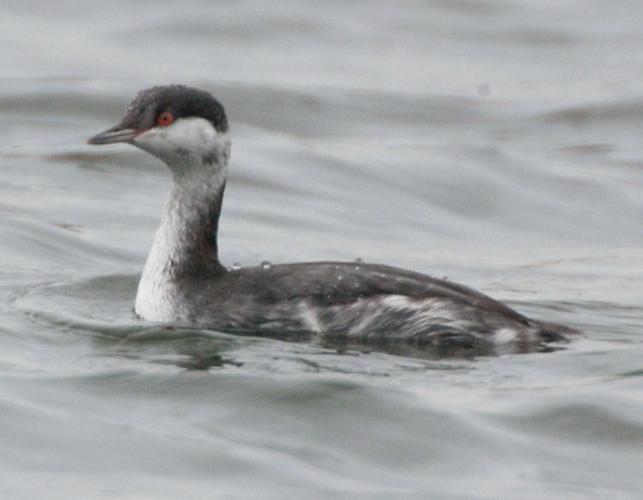
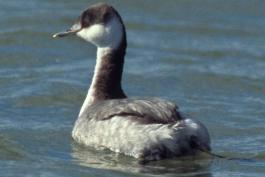

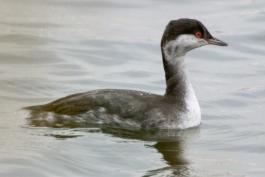
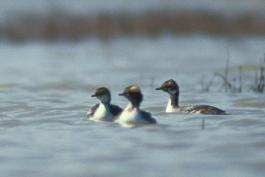
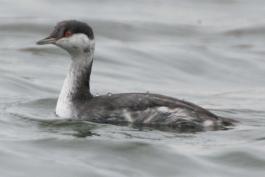
About 350 species of birds are likely to be seen in Missouri, though nearly 400 have been recorded within our borders. Most people know a bird when they see one — it has feathers, wings, and a bill. Birds are warm-blooded, and most species can fly. Many migrate hundreds or thousands of miles. Birds lay hard-shelled eggs (often in a nest), and the parents care for the young. Many communicate with songs and calls.






















